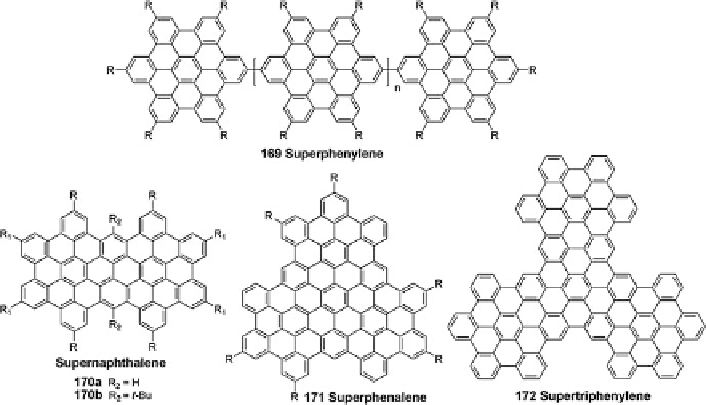Chemistry Reference
In-Depth Information
Fig. 32 Extended structures based on “superbenzene” [
123
-
127
]
to note applications such as spintronics, TPA, and ambipolar FET have already
emerged. These applications, although still in their infancy, are far beyond what
was imagined half a century ago and point to a bright future for these systems as
materials.
2D nanographenes with both zigzag and armchair edges still represent the most
intensively studied and widely used materials as they are beneficial from the
coexistence of both edge structures which leads to a combination of enhanced
stability and favorable electronic properties. Moreover, the readily available syn-
thetic methods for certain systems, such as rylenes, make the access of a series of
homologues possible and guarantee the systematic establishment of structural-
property relationships. In addition, recent studies on extended networks with singlet
biradical characters provide new insight from both fundamental study and applica-
tion aspects.
All benzenoid PAHs enjoyed a golden age in the past 20 years due to their
exceptional stability, intriguing self-assembly behavior, and applications as elec-
tronic materials. Enthusiastic efforts are also being made to achieve larger graphene
fragments from a bottom-up approach. However, the device performances obtained
so far for these materials are in general not yet comparable to the other oligomer and
polymer-based organic semiconductors. Better device performance may be the
target for the future, which requires synergistic cooperation between chemists,
physicists, and engineers.
Acknowledgement We acknowledge the financial support from A*Star BMRC grant (No. 10/1/
21/19/642), MOE AcRF Tier 2 Grant (MOE2011-T2-2-130) and IMRE Core Funding (IMRE/10-
1P0509).

